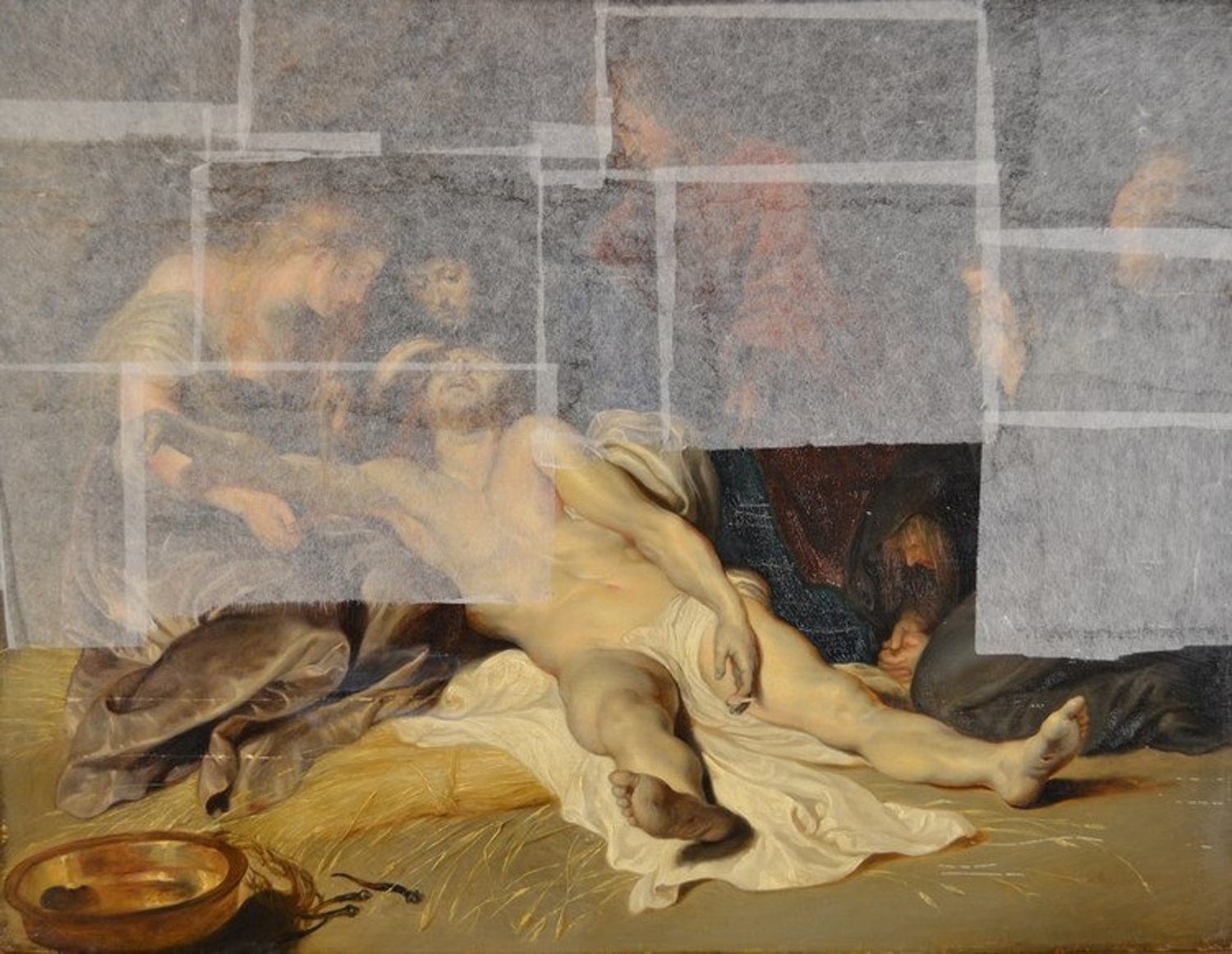The Conservation Center's dedication to the long-term preservation of artworks and heirlooms reaches far beyond the walls of our laboratory. Since 2007 we have published our educational newsletter monthly, sharing hundreds of conservation stories with our subscribers. We also believe in sharing our experience and expertise with professionals whose work intersects with conservation. Through lectures, learning modules, and podcasts, our goal is to help prepare insurance professionals for the day they respond to a claim that includes fine art. We are proud to collaborate with The Property & Liability Resource Bureau (PLRB) to provide their members with continuing education opportunities and would like to share one of those topics with you - Ethics in Conservation.
Conservators focus on minimally invasive treatments.
Conservation vs. Restoration
You may see the terms "conservation" and "restoration" used interchangeably, but there are some distinct differences. Restoration involves returning the artwork to its original condition and preferred aesthetic appearance. On the other hand, conservation focuses on preserving the artist's original work. Conservators strive to ensure the treatments they perform are undetectable by the naked eye and will be reversible in the future. Conservators will also reverse previous restoration campaigns when possible.
This painting is mid-treatment, with a facing that has been applied to secure the artist’s original paint layer.
Pricing Methodology
After examination and testing, the expected cost of conservation quoted to clients should always be based only on time and materials. A conservator should never consider the value of the artwork; this is regarded as a conflict of interest. Considering the value may incentivize the conservator to raise the costs or encourage the owner to pursue an expensive conservation treatment. Conservators should never appraise, authenticate, or sell works of art; in the same vein, appraisers or authenticators should never conserve or treat works of art.
This painting is mid-cleaning; grime and discolored sacrificial varnish is being removed to reveal the original paint layer.
Non-invasive and Reversible techniques
Conservators are trained with the ethos that "less is more." Their expertise includes the ability to execute treatments and the ability to determine the appropriate minimally invasive treatments method to stabilize best and preserve the artwork. Conservators should never use methods or materials that they know could adversely affect the artwork. Conservators also educate owners to understand treatment recommendations and long-term care recommendations to safeguard the art.
Conservators will collaborate with artist or their estate before treating their work.
Identifying Living Artist's Rights & Concerns
It may seem that owners have the right to make all decisions about the care of their artwork, but that is not necessarily the case. The Visual Artists Rights Act of 1990 (VARA), 17 U.S.C. § 106A, is a United States law protecting artist rights. VARA was the first federal copyright legislation to grant protection to moral rights. Under VARA, works of art that meet certain requirements afford their authors' additional rights in the artworks, regardless of any subsequent physical ownership of the work itself or regardless of who holds the copyright to the artwork. For instance, a painter may insist on proper attribution of his painting and, in some cases, may sue the owner of the physical painting for destroying the painting even if the owner of the painting lawfully owned it.
Even if you are not a member of PLRB, you can access and listen to the latest PLRB on Demand podcast episode featuring The Center's CEO, Heather Becker. "After the Alarm: Managing Expensive Art & Heirloom Claims During Catastrophe Situations" features excerpts from our new PLRB course on art and heirloom claims, which discusses the information an adjuster may need to collect for art conservation, how damage to art and heirlooms can be preemptively minimized, and how conservators distinguish between pre-loss damage and related damage. The episode also covers how different mediums can present special considerations in a loss scenario.




